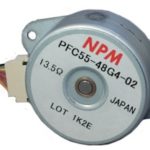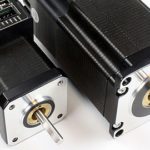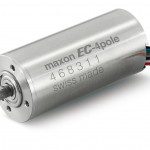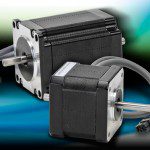Stepper drives and motors can integrate into one unit. Manufacturers supply various combinations of integrated stepper motor-drive combinations. These integrated stepper and drive units have their advantages and drawbacks. The benefits of the integrated motor and drive units include ease of implementation, reduced wiring complexity, faster setup and construction of a system and guaranteed motor-drive […]
FAQ: How does inductance phase imbalance degrade performance, and how can drives help?
Stepper motors are resistant to rapid changes in current. This is because their coils make them inductive devices along with nay internal permanent magnets, if used in that type of stepper motor. Drives must be able to operate a stepper motor correctly given its intrinsic inductance properties. Some steppers are either designed for low speeds […]
FAQ: What are some common stepper-drive applications? Are there use specific stepper drives?
Engineers selecting stepper drives have to match drive to the motor, obviously. However, beyond this, matching drive to the application is also an important consideration. Some drives are better suited for certain operating conditions and load types than others. Stepper drives find use in as many applications as stepper motors themselves, as they must work […]
FAQ: What is stepper drive idle-current reduction and why does it help?
When stepper motors operate, they operate by drawing current continuously. This method of operation ensures more accurate positioning and more consistent torque. However, this also means an increase of energy they use and the amount of heat they produce. This holds true even when the stepper motor is idling. Idling is not a very efficient […]
FAQ: How do drives for switched-reluctance motors work?
Switched-reluctance motors are stepmotors that accept power to their stators (instead of their rotors) to use output mechanical force through the use of reluctance. This is magnetomotive force to magnetic flux. Switched-reluctance motors use drives that differ from those that pair with other stepper motors. That’s because switched-reluctance motors have nonlinear magnetic behavior … but output high […]
FAQ: What are pulse and direction commands in open-loop stepper control?
When driving stepper motors open loop, there is no feedback to ensure that the motor is operating as expected. To ensure the stepper motor behaves as expected, open-loop drives use pulse and direction commands. Pulse commands are signals sent to a stepper motor by the drive. They are “pulses” of current that cause the motor […]
Maxon’s brushless DC motor ideal for operating rooms
maxon motor has developed a robust brushless DC motor for hand-held surgical tools: the EC-4pole 30. Featuring two pole pairs, this DC motor provides a nominal torque of 106 mNm and an output of 150 W. It has a hermetically sealed rotor, meaning that it can withstand over 1000 autoclave cycles. The EC-4pole 30 is […]
Industrial distribution trade association members present to business school students
Alliance Partners of Industrial Careers Pathway (ICP) recently met in Denver to plan for the future and talk with students from the University of Colorado Denver Business School about the incredibly rewarding careers in industrial distribution. Presenting to the students were: · Terry Knight, retired, SKF USA Inc., PTDA Foundation · Curtis Sprague, Branham Corporation-Mt. […]
FAQ: What are lead-lag stepper motor controls?
Lead-lag controls or compensators are pieces of programming in control systems that improve frequency response. A lead control can increase a system’s stability or its response speed. A lag control can reduce steady-state errors. Different combinations change output in different ways. A note on terminology: The terms controller and compensator have several different meanings. Some […]
FAQ: What is closed-loop control with load-position control?
Load-position control is a form of closed-loop stepper-motor control. It’s true that stepper motors can run open loop—as they don’t need sensor-feedback-based controller corrections. So, stepper-motor circuits are simpler and the motors are easy to implement … but if anything goes wrong in the application, the open-loop stepper won’t respond to the new condition. In […]











